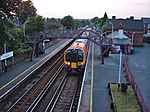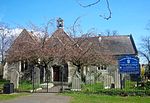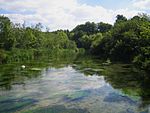Chessel Bay

Chessel Bay is a 12.9-hectare (32-acre) Local Nature Reserve on the east bank of the River Itchen in Southampton in Hampshire. It is owned and managed by Southampton City Council. It is part of Solent and Southampton Water Ramsar site and Special Protection Area, and of Lee-on-The Solent to Itchen Estuary, which is a Site of Special Scientific Interest.It comprises a narrow strip of woodland, a parallel strip of shingle and saltmarsh and a substantial area of mudflats. At low tide the mudflats are exposed attracting wading birds and wildfowl: curlew, oystercatchers and dunlin can be seen throughout the year. In winter, the site is also used as a stop-over for other migrating birds such as brent geese. At low tide, mudflats are exposed, and these attract feeding estuary birds. The mudflats are also nationally and internationally important. Local volunteers, Friends of Chessel Bay, team up with the City Council twice a year to combat the large amount of litter which accumulates in the bay, and carry out management of the Reserve.
Excerpt from the Wikipedia article Chessel Bay (License: CC BY-SA 3.0, Authors, Images).Chessel Bay
Cross Road, Southampton Merry Oak
Geographical coordinates (GPS) Address External links Nearby Places Show on map
Geographical coordinates (GPS)
| Latitude | Longitude |
|---|---|
| N 50.9112 ° | E -1.37553 ° |
Address
Chessel Bay Local Nature Reserve
Cross Road
SO19 4BW Southampton, Merry Oak
England, United Kingdom
Open on Google Maps











